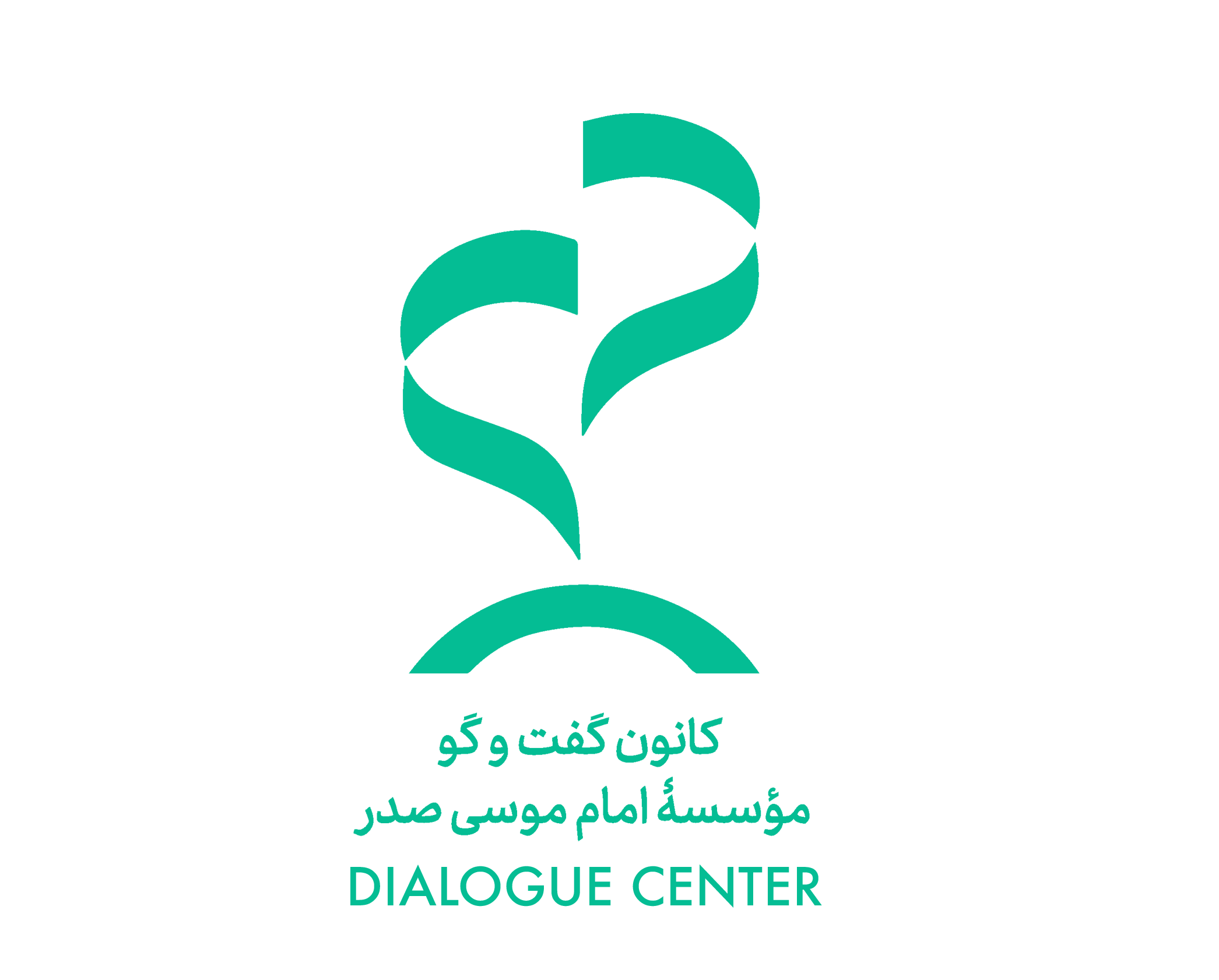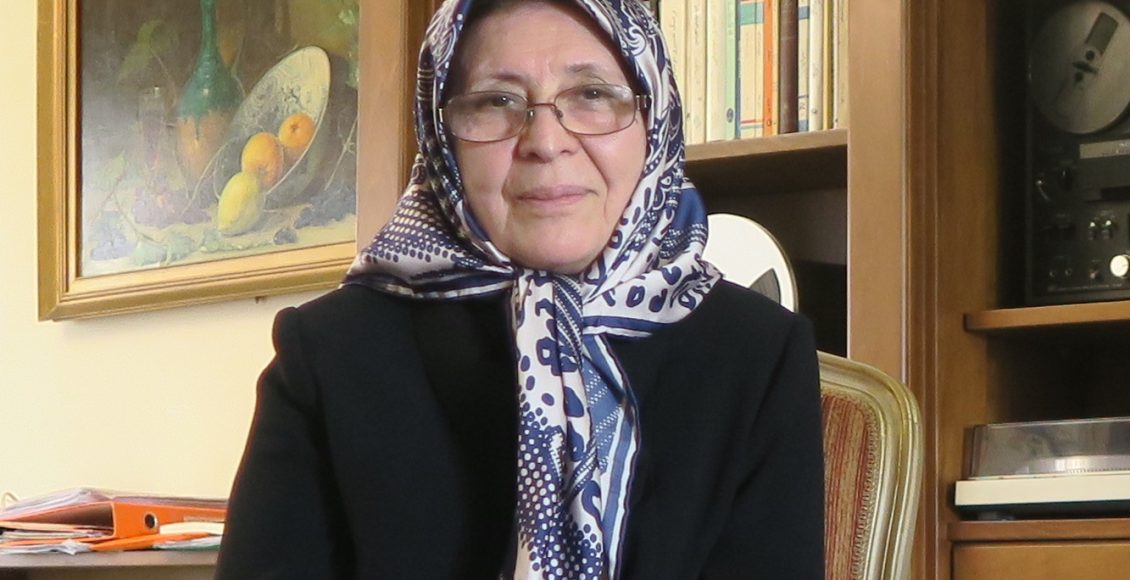

Fatemeh Sadr Ameli
This article is to discuss the role of women in intercultural and interfaith dialogue.
I would like to make the point that dialogue, as a paradigm of relationships between human beings, as well as the dialogue between religions, offers women the possibility to improve their role in society and their involvement in positions of leadership.
The path to substantiating this theory combines various elements:
– The crisis situation of the global community and the necessity of dialogue,
– the debate on women’s rights in society and the abolition of the dominance of the male perspective on the word, as well as
– the necessity of change in communication between human beings.
Women are potentially well equipped to have a more prominent part in this necessary change because they are less burdened with the attributes of male dominance.
The modern world is in search of a new foundation on which an order for human and social relationships can be based.
For a real dialogue between faiths, new doors must be opened to recognize the realities in the world and to gain new insights.
Dialogue is, in the first place, the search for compassionate and trusting contact. If dialogue is to be a new chapter with regard to the relationships within the global community, then it must leave behind competition and enter a phase of mutual assistance. The Other must not be pushed aside; rather we must learn to coexist and cooperate with the Other.
The world problems are, for the greater part, a result of a male perspective on science and industry. This perspective ( competition and dominance ) has destroyed the environment, both where nature is concerned and with regard to the human soul and human relationships.
Women have, in the context of their social activities and women’s emancipation movements, not taken an initiative of their own but worked on the premises that had been determined by the male dominated world.
The following discussion is to describe and analyze the theory that women are able to open new ways for their social participation rather than just imitating the male dominated perspective on the world, and to show that this theory does not contradict Islamic sources.
The theory is: characteristics described as “female” and “male” are not essentially linked with being female or male biologically but part of the constitution of each human being irrespective their gender.
The existing gender differences are not part of the essence of the sexes but are a consequence of social conditioning and the identification of gender and role.
Even where hormones are concerned, both male and female hormones are found in each human individual.
(From: p.139, Liebe, Sexualität und Matriachat):
In a similar sense, both sexes and what they symbolize – the male and the female principle in the world, in the universe, and in each of us – are two poles that must preserve their polarity in order to produce the fruitful dynamics, the productive force that proceeds from this very polarity.
In the course of history, men turned their perspective on truth into the dominating discourse. In the book „Male Reason„ the author investigates the terms of maleness and femaleness in Western philosophy. The book aims at demonstrating in how far reason has been defined as male and, as such, has been embedded in Western philosophy.
Seen from this perspective, women’s ways of participation in society as well as their self-image in the course of history has been molded according to the interests of men.
Professor Flaake says in her article about Gilligan:
„Although in principle, in Gilligan’s view, both forms of moral judgment can be found with both sexes, there are – according to her assumptions following from Nancy Chodorow’s analytic studies – differences between men and women based on gender-specific processes of development rooted in social structures: relationship-oriented morals correspond to women’s identity that focusses on inclusion into relationships with others as presented by Chodorow, while principle-oriented morals correspond to male identity that is based on demarcation and distance. „
“Precisely this dilemma – the conflict between compassion and autonomy, between virtue and power – tries to dissolve woman’s voice in its endeavour to regain the Self.” (ibid., p. 90f.)
This dilemma can only be terminated if people in society are no longer separated according to a male and female identity and the separation is considered as specific to culture.
Being female and male is not to be identified with the biological characteristics of human beings; rather each human individual is, beyond being a man or a woman, a human being in the first place and complete only if both characteristics are personified at the same time.
This understanding is confirmed by the Quran according to my interpretation.
The Quran proceeds from the idea of the same creation and the same potential for the development and unfolding of man and woman. Both sexes have the same task and responsibility as members of society. The Quran presents female examples who are considered models not only for women but for all human beings.
In the Quran, the family as the smallest social entity is described as the place where its members may find peace with themselves and where they learn solidarity and mercy for life. The family consists of woman, man and child. Plenty of research has been done on the importance of this threefold relationship for human development. This threefold relationship of father, mother and child may be considered a symbol for the most fundamental elements if humanity.
In the family as the foundation of society, the relationship of father – mother – child has a central role in the development of a human being. This significance cannot be reduced to the mere biological facts of being a father or a mother, like pregnancy and birth. Its central importance is rather based on each their symbolic character as well as the ways of dealing with each other. Motherly love and empathy, fatherly discipline and power, represented by mother and father respectively in the initial stages of the child’s development, are necessary for harmonious, development-promoting social interaction later on irrespective of gender.
For the sake of harmony in society, the three essential characteristics of the threefold relationship within the family should be represented by each human individual.
This means that the male and female characteristics as well as the child as something new, combined in the family as three different persons, may, in the wider context of society, no longer be ascribed to different separate individuals but are to be realized by each individual human being.
This makes a change possible that is impossible in a world that is perceived and defined from an exclusively male perspective.
It is important to stop considering the education towards the presentlu fixed male and female role expectations as something determined by nature and to try to change this point of view through appropriate measures, like making changes in the family situation. This implies that possibilities should be created to make the gender images more flexible.
The following project is an example.
Professor Karin Flaake describes this project:
It works with families in which, already early on, the fathers participated in the children’s care and education at least equally intensively as the mothers and where the children are now adolescents, that is, in that phase of their life history in which dealing with gender images is of a special importance.“
The purpose of this research that continued through several semesters was to find out if „shared parenthood„ and the identification with fatherly care “could enable boys to develop images of maleness in which caring for others, emotional closeness, and empathy are central constituents. With regard to girls, the expectations were left more open, but even in their case we assumed that gender images would become more flexible, that caring, emotional closeness, and empathy are no longer associated essentially with the female sex but can be seen as elements even of male identiy„
The results show that, just as it is the case with every change in the traditional roles, a changing distribution of tasks between the sexes not only opens up a new liberation from limitations and creates new possibilities but are also connected with insecurity.
It becomes obvious from the interviews that, through this kind of distributing roles, “the fundamentals of traditional gender relationship start to erode.“
It is clear that each change of habits with regard to the relationship of parents to their children is always connected with the necessity of each member of the family working on their mental and spiritual state, of dealing with each their own fears and desire ……“
Interfaith dialogue offers a chance for women to take on a more active role in shaping the situation of society and to participate in leadership positions much more than before.
This statement is based, on one hand, on the fact that women, considering their specific characteristics which, as yet, have been exclusively connected with their activities like e.g. protection, sensitivity and empathy, are more suited to create the atmosphere necessary for this still growing tree. On the other hand they are more able to set up suitable rules for human beings to deal with each other, both between different cultures and within each culture, and to take up positions of responsibility and leadership.
This means that the dialogue as such and the dialogue between faiths has certain conditions that are more easily represented by the greater part of women according to their present situation.
For dialogue, the ways of human relationships in the working world, in politics, and in attitudes to life that previously have been determined by men need rethinking. All rethinking and all change takes time to change one’s habits. During that time for restructuring habits that is mainly necessary for men, women have time to utilize their creativity and capability and to take up their important role in restructuring, becoming very active in this field.
For the aforementioned reasons, it can be safely assumed that intercultural dialogue offers women the possibility to end their marginalization and misrepresentation in society.
Summary
The situation of crisis in the world makes it imperative to look for change. This change must include both the macro-level and the micro-level of society as well as the social structures.
In the course of history, women have had a role in shaping social structures and activities that was less than appropriate to their potential and their being human beings.
From a position of disadvantage, women have let men who were in a dominant position determine their role in society and not taken an initiative of their own.
Women are to show a new way that includes the following:
A difference between female and male is only admissible in the limited field of children’s upbringing in the family where, for biological reasons, certain tasks like pregnancy and breastfeeding can be only fulfilled by women. Otherwise each human individual has simultaneously female and male characteristics, and for the sake of a holistic development of a person it is important not to neglect this fact.
This perspective on gender is quite compatible with the Islamic concept of gender. Wherever the Quran speaks of male and female, this refers, in my understanding, to specific characteristics that are not exclusively associated with men or women respectively, as becomes obvious in the discussion of the Quranic term „Redjal„ (men) in Iran.
The conditions for dialogue, for example tolerance, respect, empathy, openness, inquiring, listening and the like have been neglected in a world shaped by men. Women are able to do justice to these conditions and to invite men to do the same.
================


